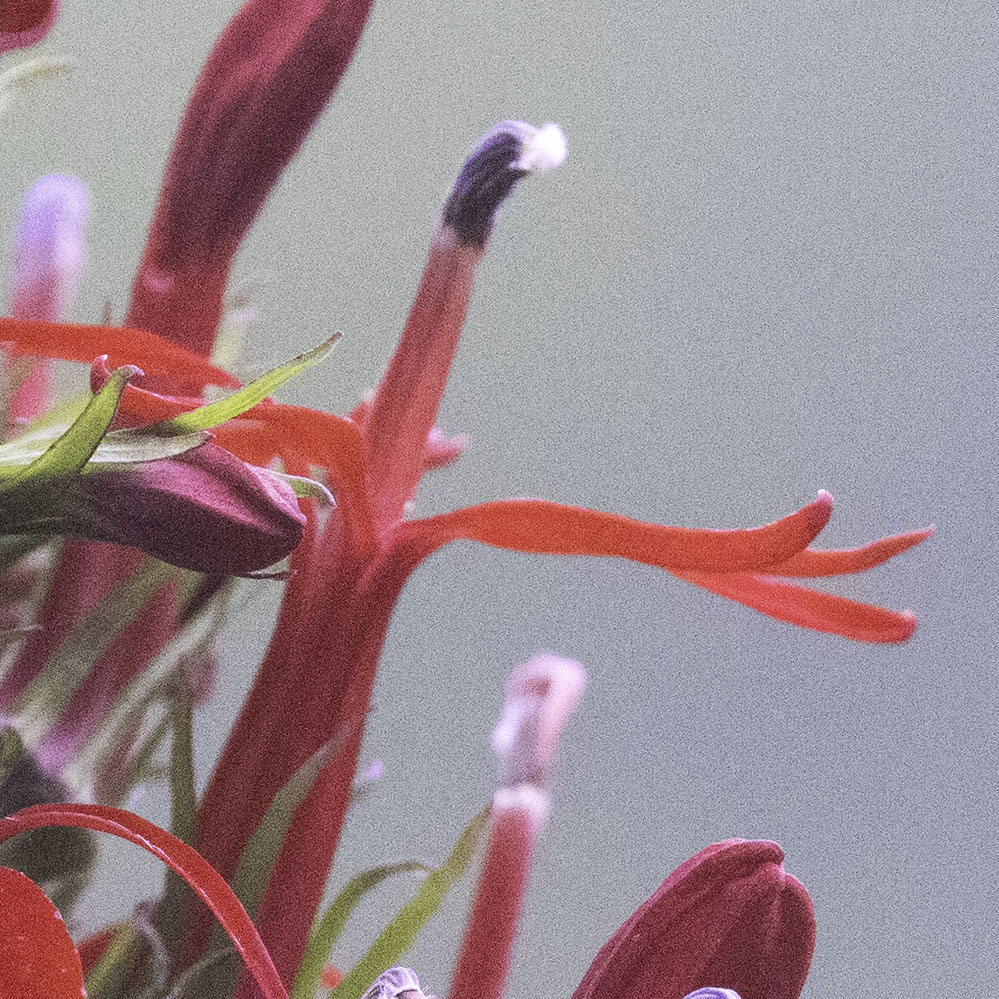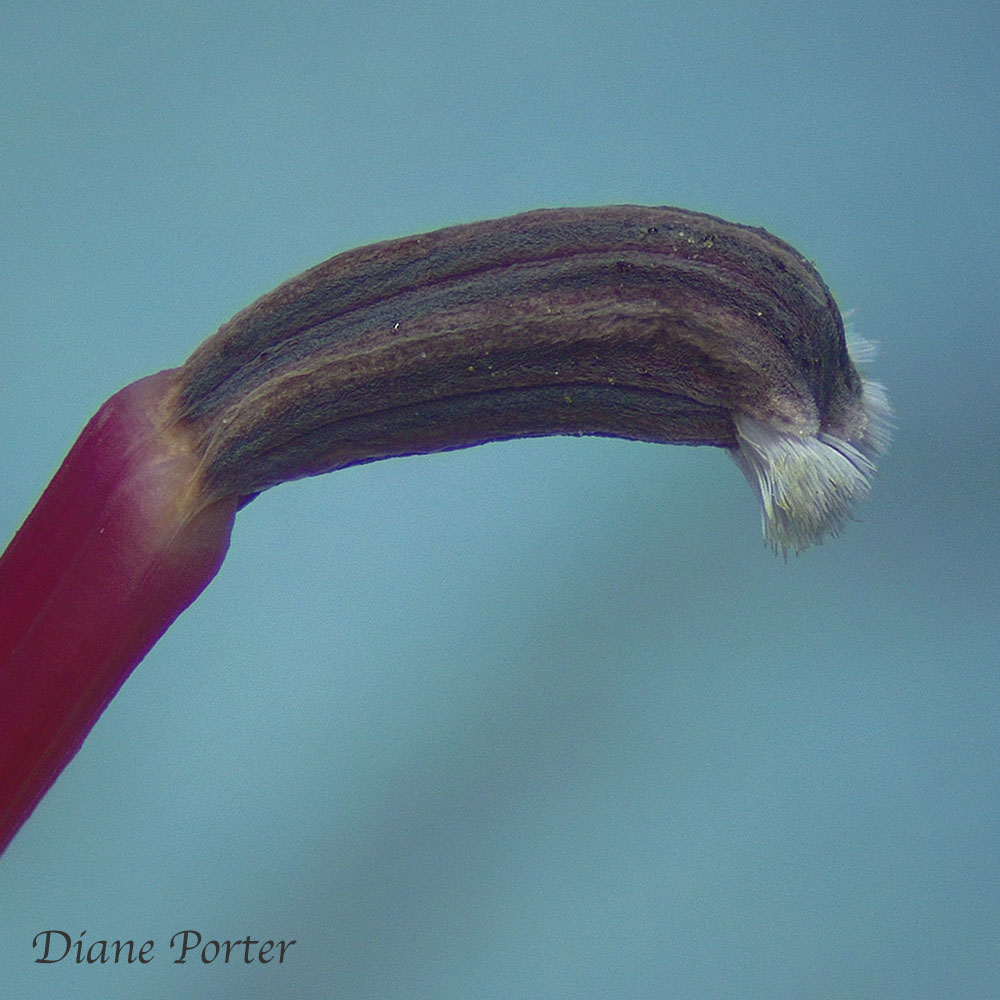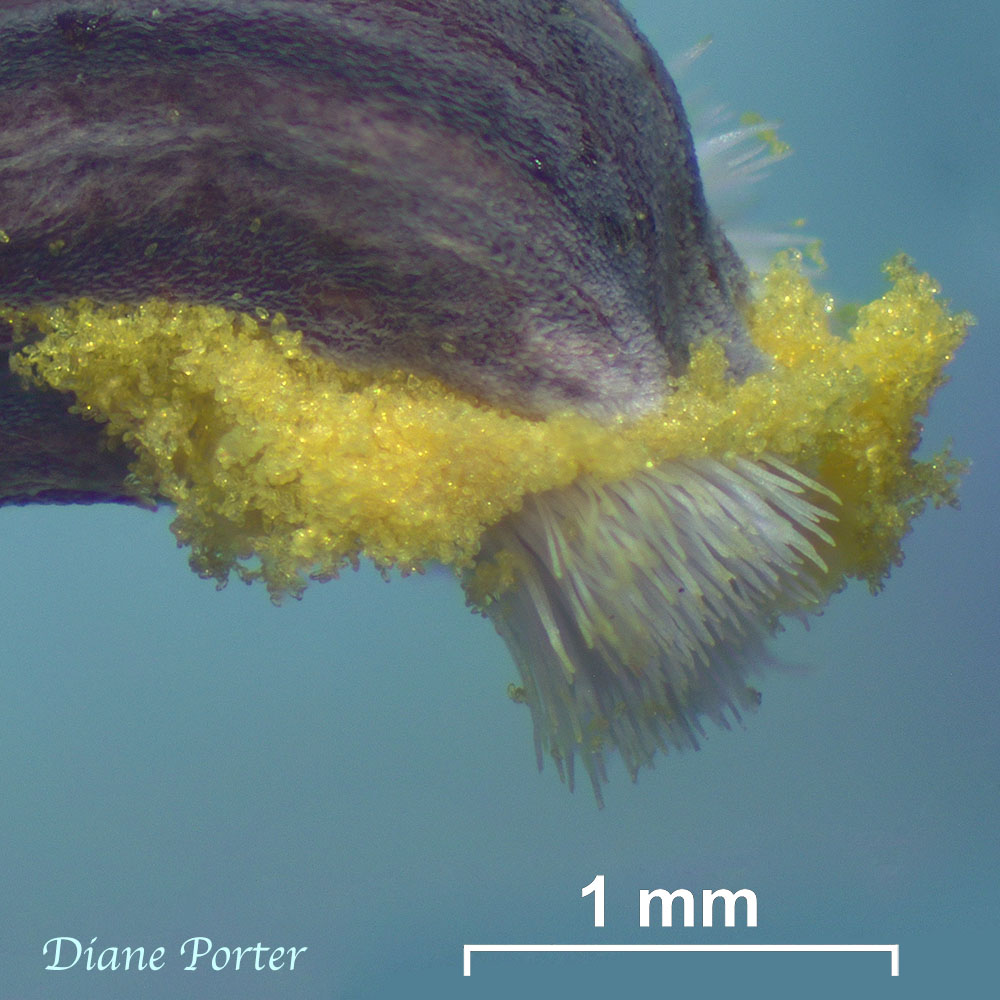Hummingbird and Cardinal Flower
A flower made for a bird
Cardinal Flowers grow wild throughout eastern North America, including in my Iowa backyard. They've been here since before Europeans brought flowers from their homeland. This flower's homeland is right here.
It grows in full sun, but it likes damp soil, so people encounter it along creeks and in low damp meadows where the native plants have not been replaced by crops, concrete, or plants from other parts of the world.

The seeds tiny, as fine as dust, and the seedlings are almost microscopic also. I wondered, when I first found this plant, how it was propagated. As if it required gardeners to plant it.
But of course nature provides her own gardeners, and in the case of Cardinal Flower, the Ruby-throated Hummingbird is the gardener.
Reproduction takes place in a structure that comes out of the center of the flower. This long narrow structure ends in five stamens (male elements) that are fused together to form a tube. Like all Lobelias, Cardinal Flower has an unusual reproductive strategy. The pollen is concealed inside the tube of stamens (the staminal tube). And down inside the fused stamens are the female elements. No individual flower can pollinate itself, because it provides pollen before it is ready to accept pollen. Therefore it has to be pollinated by a different flower.
Whoa! Then how do Cardinal Flowers get pollinated? Like birds and bees and humans, they do it with sex.
Sex in the Cardinal Flower
When the Cardinal Flower blossom opens, it starts out acting the male role, which is to say it provides pollen. In the photo below, the staminal tube rises up and and rides above the petals.

If you look at a newly-opened blossom through a microscope, you see the staminal tube has a sort of brush at the end. The brush is made of whitish hairs that emerge from the ends of the tube.

I noticed that when I bumped my finger into that little brush, my finger came away with a tiny yellow dot.

Through a microscope, the dot looked like yellow powder — pollen! It seemed as if the brush functioned as a trigger. When bumped, it released pollen from inside the tube.

And when I squeezed the tube, quite a lot of pollen gushed out.

Under higher magnification, the very tiny grains of pollen become visible. (Click image to enlarge.)

The hummingbird's part
Here a Ruby-throated Hummingbird contacts a Cardinal Flower that is in its male phase. The brush of the staminal tube is in exactly the right place to trigger the release of a few grains of pollen onto the hummingbird's head. (Click the photo to see an enlarged image.)

After a few days, pollen no longer comes out of the staminal tube. Instead, the style and stigma (the female parts) emerge right out of the center of the tube.
In the center of the photo below, the style is the slender tube. At the end of the style, the stigma is a two-part, sticky, magenta area to which pollen can easily adhere. You can still see the white brush, but it no longer triggers a release of pollen.

If the next flower the hummingbird visits happens to be a Cardinal Flower in its female phase, the bird will give up the pollen to the flower and cause pollination. Here you can see the stigma giving the hummingbird a kiss right where the Hot Lips stigma will pick up any pollen that may be on the bird's head. (Click the photo to see an enlarged image.)

Meanwhile, unaware that it is being used, the bee sips some nectar and flies away happy.
— Diane Porter, Fairfield, Iowa, August 18, 2022

